Are you facing an issue with your GFCI outlet not working? This can be a very concerning situation, and you may not know where to look to find the problem.
Start by checking the test/reset buttons on the outlet. If the buttons do not reset, check the circuit breaker in the main panel. If the breaker is tripped, simply reset it and test the outlet again.
Finally, check the wiring of the outlet to ensure the connections are secure. If the wiring is loose or damaged, it should be replaced.
This article will provide a comprehensive guide on troubleshooting GFCI outlets so that you can get this issue resolved quickly and safely.
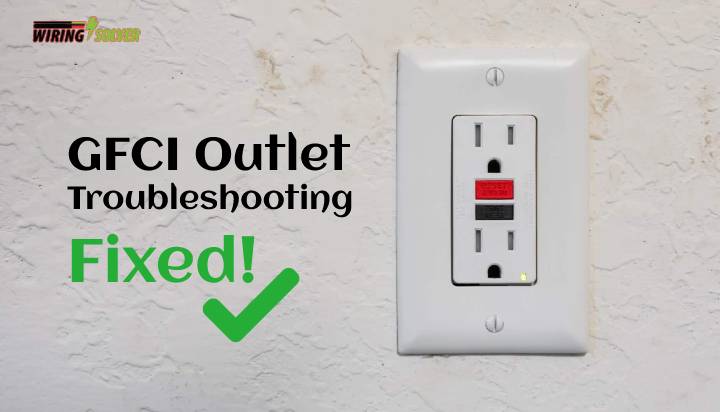
How Can I Troubleshoot a GFCI Outlet?
As it stands, GFCI outlet troubleshooting is pretty simple. You can use the face buttons to do so. Let’s take a look at the steps of troubleshooting a GFCI outlet.
1. GFCI Indicator Light Statuses
The indicator light does not only indicate the presence of power but also provides necessary signals to the users about the state of the GFCI outlet.
- No Light: If the indicator lights are not turned on, it means that your GFCI outlet is in a tripped state, and does not have any power in it.
- Green: Is the GFCI light supposed to be green? Yes, a GREEN indicator implies that your outlet is working properly and is operational. GREEN is the optimal indicator color.
- Red: A red light indicates that the GFCI outlet requires attention and that a problem may exist. To reset the GFCI in this scenario, simply press the TEST and RESET buttons. If the outlet turns GREEN, your outlet is okay.
- Both: GFCI RED and GREEN lights are both on? This means there’s a wiring issue within the circuit causing the outlet to malfunction.
These statuses have to be kept in mind while troubleshooting a GFCI outlet.
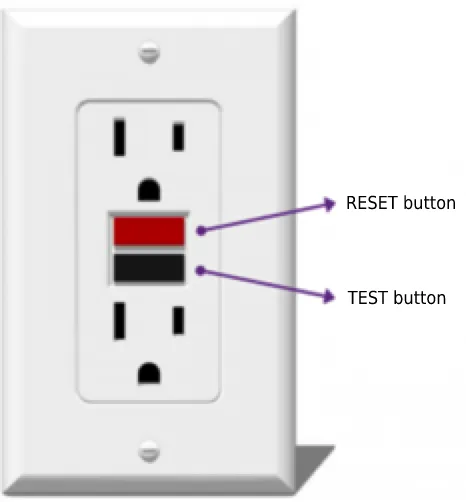
2. Testing a GFCI Outlet Using the Face Buttons
All GFCIs have two face buttons, one labeled TEST and the other labeled RESET (Fig 1).
- Press the TEST button.
- You will hear a “CLICK” sound or a beep. And your RESET button will pop itself out.
- The indicator light will turn off.
- Press the RESET button that has now popped out.
- If the button clicks itself down and the GREEN indicator light turns back on with a beep, your outlet is functioning properly and is operational.
- However, if the RESET button does not stay down, and keeps popping back up, that means there is no electricity in your outlet. And you need to check the power supply/wiring.
- Also, the indicator light will remain turned off too in such a case.
If your outlet does not show any indicator light or a RED light, it needs further troubleshooting.
3. Troubleshooting a Malfunctioning Outlet
If after testing your GFCI, you might find that it did not pass the test. So, why is my GFCI outlet not working? There could be a few reasons.
- Tripped Breaker: Open the main circuit panel of your household. Inspect all the breakers if any of them has tripped or not. A tripped breaker might also cause an outlet to stop working.
- Faulty Connection: A faulty connection could cause a GFCI outlet to malfunction. Be sure to turn off the power beforehand and wear safety gear. You can do it yourself. You just need to know how to wire a GFCI outlet with 3 wires. Do not hesitate to consult a professional if needed.
- Dead Outlet: First, it won’t trip when you push the TEST button and the outlet will stay hot or dead. Secondly, the RESET button stays out and won’t reset. And the last one is that the button trips out but the outlet stays hot. They should be replaced.
How Can I Prevent Future GFCI Outlet Failures?
Preventing future GFCI outlet failures is important for ensuring the safety of your home and protecting your appliances and electronics. There are a few steps you can take to help prevent GFCI outlet failures:
Test your GFCI outlets regularly:
GFCI outlets have a built-in test button that allows you to test their functionality. It’s a good idea to test your GFCI outlets every month to ensure they are working properly. If the outlet fails the test, it may be time to replace it.
Keep GFCI outlets clean:
Dust and debris can accumulate in GFCI outlets over time, which can interfere with their functioning.
To prevent this, it’s important to keep your GFCI outlets clean. Use a soft, dry cloth to gently wipe the outlet and remove any dust or debris.
Avoid overloading GFCI outlets:
GFCI outlets are designed to protect against electrical overloads, but they can only handle so much.
To prevent GFCI outlet failure, it’s important to avoid overloading the outlet with too many appliances or electronics.
If you need more outlets, consider installing additional outlets or using a power strip.
Use GFCI outlets in wet or damp areas:
GFCI outlets are designed to protect against electrical shocks in wet or damp areas. If you have outlets in these types of areas, it’s important to use GFCI outlets to ensure the safety of your home.
By following these simple steps, you can help prevent future GFCI outlet failures and ensure the safety of your home.
Summary
In conclusion, troubleshooting a GFCI outlet can be a simple process. By following the steps outlined in this article, you can quickly identify the cause of the problem and take the necessary steps to resolve it.
If you are still unable to get the outlet working, it is best to contact a professional electrician for assistance. With their help, you can ensure that your GFCI outlet is functioning properly and providing the necessary protection.

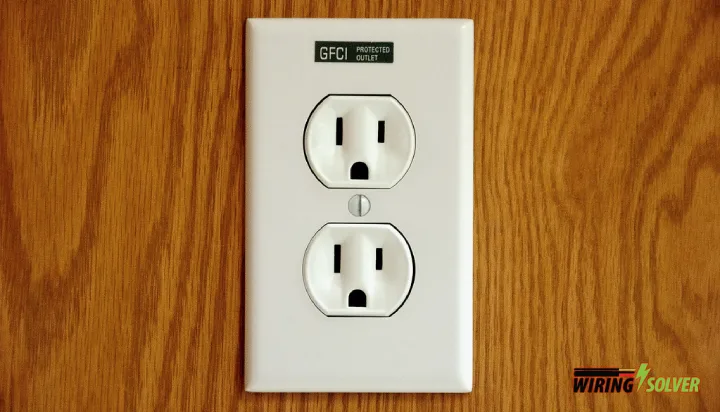
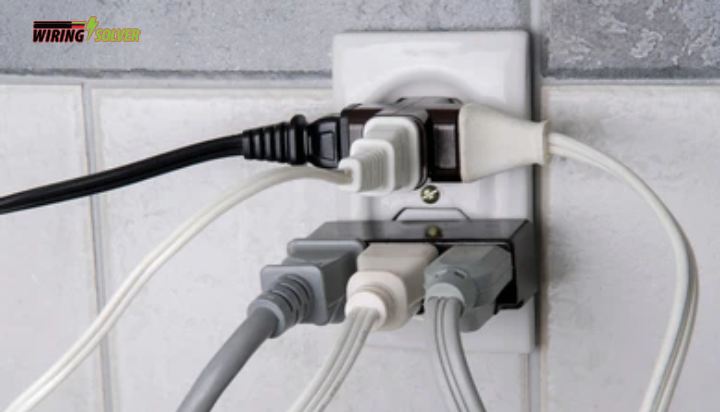
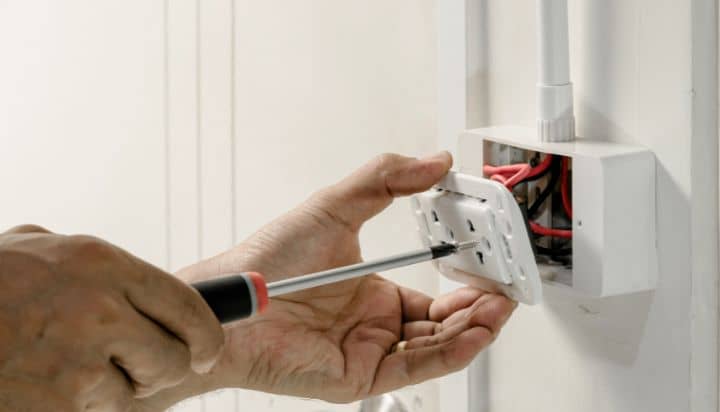
![How To Wire A 2 Pole GFCI Breaker Without Neutral? [Full Guide]](https://wiringsolver.com/wp-content/uploads/2022/05/How-To-Wire-A-2-Pole-GFCI-Breaker-Without-Neutral.jpeg)
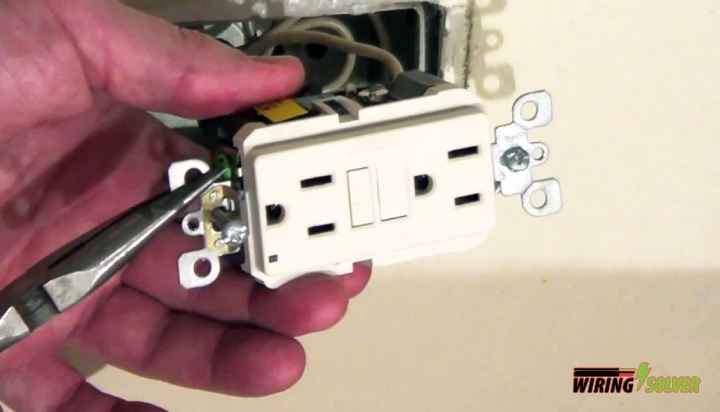
![Dead Outlets: Are They Dangerous? [Solved]](https://wiringsolver.com/wp-content/uploads/2022/07/is-a-dead-outlet-dangerous.webp)